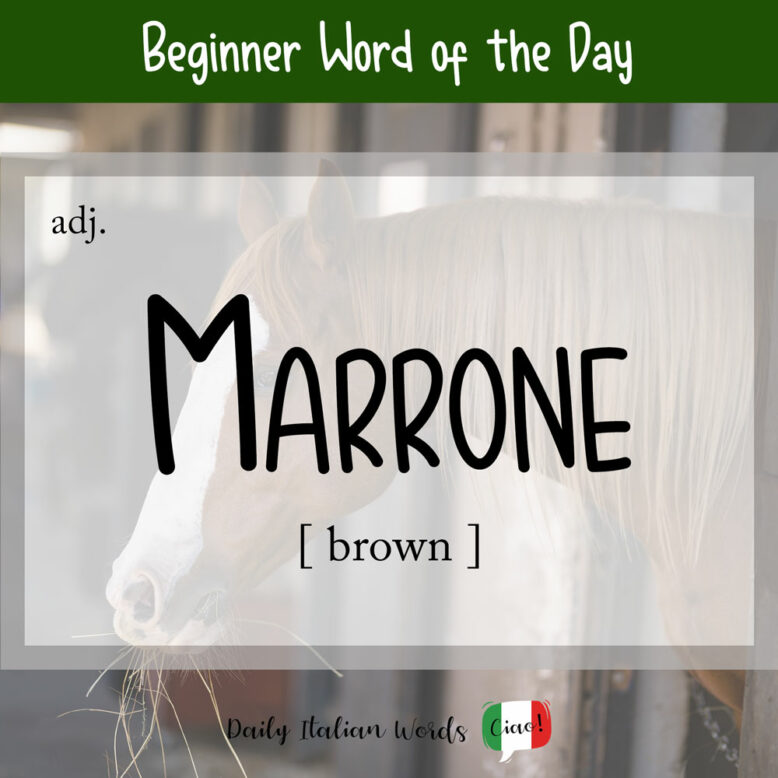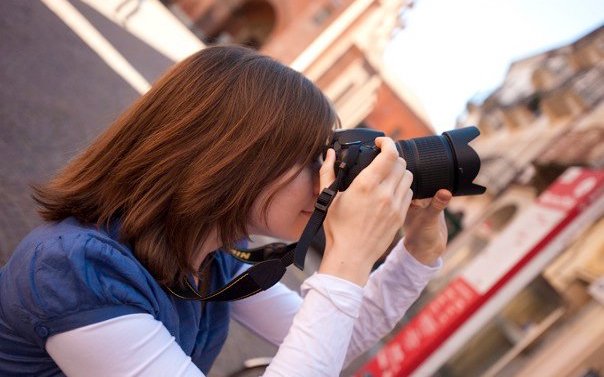Colours are one of the first things all learners of a second language try to memorise. Today we’re taking a look at the colour brown which translates as marrone (plural: marroni) in Italian.

Il nostro cane è marrone scuro come il cioccolato.
Our dog is dark brown like chocolate.
The diminutive form of marrone is marroncino. It can translate as brownish or dull brown.
Le pareti sono diventate un po’ marroncine dopo tutti questi anni.
The walls have become a dull brown colour after all these years.

Although most brown things are simply labelled marrone, two notable exceptions are a person’s hair (capelli) and eyes (occhi). To talk about brown hair and eyes, Italians often use the word castano (chestnut brown) instead. (That said, the word marrone isn’t incorrect, especially in the case of the eyes.)
Sara ha i capelli e gli occhi castani.
Sara has brown hair and brown eyes.

The word marrone can also refer to the large and savoury chestnut found in Italy. It is from this meaning that we also get the slang term marrone, referring to a man’s testicles. As you can imagine, it is mainly used between men and shouldn’t be used in polite company!
Non mi rompere i marroni!
Don’t break my balls!
One final translation of marrone is blunder or blooper as a result of ignorance or carelessness.
Sì, lo so, ho commesso un marrone. Farò meglio la prossima volta.
Yes, I know, I messed up. I’ll do better next time.
Heather Broster is a graduate with honours in linguistics from the University of Western Ontario. She is an aspiring polyglot, proficient in English and Italian, as well as Japanese, Welsh, and French to varying degrees of fluency. Originally from Toronto, Heather has resided in various countries, notably Italy for a period of six years. Her primary focus lies in the fields of language acquisition, education, and bilingual instruction.


